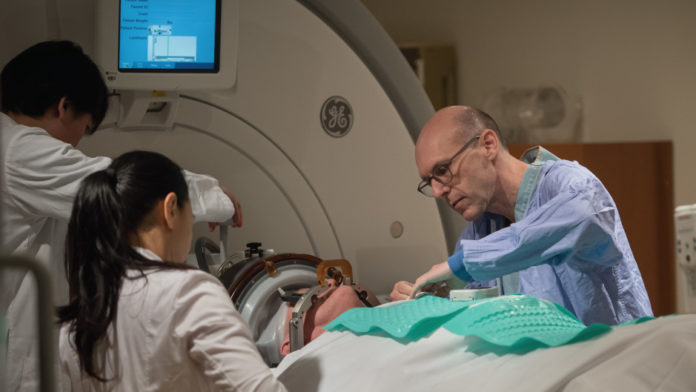Every year, 25,000 Canadians are diagnosed with dementia; within 15 years, it is projected that close to one million people in Canada will be living with the disease. In response to these numbers, there is an incredible amount of research being conducted to learn more about the leading cause of dementia, Alzheimer’s Disease (AD).
There have been over 2,000 AD clinical trials worldwide, of which over 500 are currently ongoing. Despite the abundance of research, there are only four drugs approved by Health Canada, but they are limited to treating the symptoms of the disease. Unfortunately, the majority of AD drugs fail in clinical trials, as they are unable to produce the desired cognitive improvement. Many of these failures are due to the inability of drugs to actually reach the brain.
The blood-brain barrier (BBB) is made of multiple types of cells packed tightly together, surrounding the blood vessels of the brain. The BBB controls the passage of molecules between the brain and the blood, acting as a highly selective gateway to ensure the proper environment for the brain to function. This barrier regulates the passage of oxygen and nutrients while protecting the brain from harmful chemicals and bacteria.
The BBB is somewhat of a double-edged sword as it not only prevents the entry of undesirable things, but also the delivery of 98% of therapeutics. This presents a massive hurdle for the treatment of AD and has led researchers to struggle with the question: How can we actually get therapeutics to the diseased brain?
Focused Ultrasound
Researchers at Sunnybrook Health Sciences Centre in Toronto are the first in the world to use focused ultrasound (FUS) to open the BBB in AD patients. Unlike traditional imaging ultrasound, FUS concentrates the ultrasound waves into a targeted beam, which can then be used for the treatment of diseases.
To accomplish this, FUS is coupled with MRI to target specific brain regions. Next, microbubbles are injected into the blood stream, which quickly travel to the blood vessels in the brain. As the microbubbles pass through the ultrasound beam, they expand and contract, temporarily loosening the tightly packed cells that make up the BBB. Following treatment, MRI is used to confirm opening of the BBB using a contrast dye that normally would not be able to enter the brain.
A new hope for treating brain disorders
In November 2015, Sunnybrook researchers first used FUS to open the BBB for the delivery of chemotherapeutics in cancer patients. Now, in a study led by Dr. Nir Lipsman, that same approach is being used to open the BBB in six AD patients.
This initial study is a small Phase I trial to evaluate safety of the use of FUS and is not yet coupling the procedure with drug delivery. However, pre-clinical research suggests that simply opening the BBB using FUS alone has beneficial effects in AD. These studies have shown that FUS treatment, without any therapeutics, can reduce amyloid plaques and improve memory in rodent models of AD.
Although Dr. Lipsman’s study is still ongoing, this is the first step towards exciting, new possibilities for AD treatment. If successful, researchers can move on to treating larger areas of the brain and potentially delivering therapeutics.








































